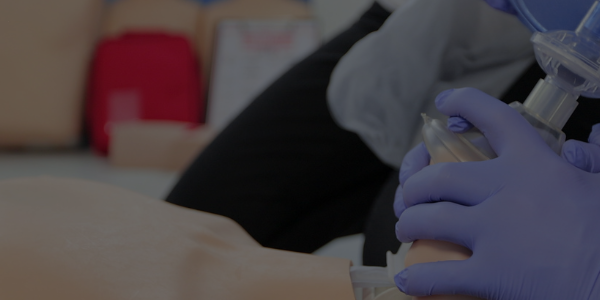Breathing techniques are a crucial aspect of first aid, especially in life-threatening situations such as cardiac arrest or respiratory emergencies. Understanding the optimal breath-per-cycle ratios can help improve the effectiveness of first aid interventions like cardiopulmonary resuscitation (CPR). In this blog post, we’ll discuss the importance of proper breathing techniques and the recommended breath-per-cycle ratios for first aid. To learn these essential techniques and more, consider booking a first aid course with AB First Aid Training [1]. Visit www.abfirstaid.com.au or call 03 8364 8984 to book a course today.
The Importance of Breathing Techniques in First Aid
In emergency situations, a person’s airway and breathing may become compromised, leading to inadequate oxygenation and, in severe cases, cardiac arrest. Proper breathing techniques in first aid, such as rescue breaths during CPR, can help maintain oxygenation and improve the chances of survival [2].
Cardiopulmonary Resuscitation (CPR) Breath-Per-Cycle Ratio
CPR involves alternating between chest compressions and rescue breaths to maintain blood circulation and oxygen supply to vital organs. The Australian Resuscitation Council (ARC) recommends the following breath-per-cycle ratios for CPR [3]:
- Adults: 30 chest compressions to 2 rescue breaths
- Children and infants: 30 chest compressions to 2 rescue breaths when performed by a single rescuer, or 15 chest compressions to 2 rescue breaths when performed by two rescuers
Continuous Chest Compression CPR
In some situations, continuous chest compression CPR without rescue breaths may be performed, particularly if the first aider is not trained in CPR or is unwilling or unable to provide rescue breaths. Research suggests that continuous chest compression CPR can be as effective as conventional CPR with rescue breaths in certain circumstances [4].
Special Considerations for Infants and Children
When providing rescue breaths for infants and children, it is important to use a gentle technique to avoid causing injury. For infants, cover both the mouth and nose with your mouth, and for children, pinch their nose and seal their mouth with your mouth. Provide smaller and gentler breaths, ensuring their chest rises with each breath [5].
Understanding the importance of breathing techniques and the optimal breath-per-cycle ratios in first aid can help improve the effectiveness of lifesaving interventions. To learn these essential skills and more, consider enrolling in a first aid course with AB First Aid Training [1]. To book a course, visit www.abfirstaid.com.au or call 03 8364 8984.
Please note that regular First Aid and CPR Training is the best way to make sure that you’re prepare in the case of an emergency. Book a course with us
Footnotes and Sources:
[1] AB First Aid Training. (n.d.). AB First Aid Training. Retrieved from https://www.abfirstaid.com.au
[2] Australian Resuscitation Council. (2021). Guidelines. Retrieved from https://resus.org.au/guidelines/
[3] Australian Resuscitation Council. (2021). Guideline 8: Cardiopulmonary Resuscitation. Retrieved from https://resus.org.au/guidelines/section-8-cardiopulmonary-resuscitation/
[4] Iwami, T., Kitamura, T., Kiyohara, K., & Kawamura, T. (2015). Dissemination of Chest Compression-Only Cardiopulmonary Resuscitation and Survival After Out-of-Hospital Cardiac Arrest. Circulation, 132(5), 415-422. doi:10.1161/CIRCULATIONAHA.114.014905
[5] Better Health Channel. (2021). First aid basics and DRSABCD. Retrieved from https://www.betterhealth.vic.gov.au/health/conditionsandtreatments/first-aid-basics-and-drsabcd





